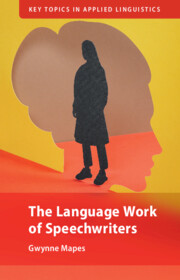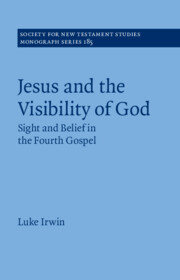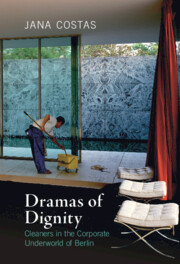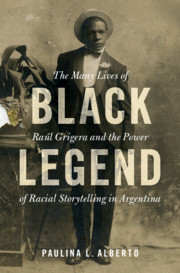Refine search
Actions for selected content:
29 results

The Language Work of Speechwriters
-
- Published online:
- 31 October 2025
- Print publication:
- 14 August 2025
Chapter 16 - Lithium in the Web of Life
- from Part III - Applications
-
-
- Book:
- Commodities and Literature
- Published online:
- 14 October 2025
- Print publication:
- 09 October 2025, pp 278-297
-
- Chapter
- Export citation
5 - Disfigurement Equality at Work
-
- Book:
- Appearance, Disability and the Law
- Published online:
- 31 July 2025
- Print publication:
- 14 August 2025, pp 63-76
-
- Chapter
- Export citation
3 - Invisibility, Materiality, and Erasure
-
- Book:
- The Language Work of Speechwriters
- Published online:
- 31 October 2025
- Print publication:
- 14 August 2025, pp 72-107
-
- Chapter
- Export citation
5 - Identification of the Girl Child in the Convention on the Rights of the Child
-
- Book:
- The Status of the Girl Child under International Law
- Published online:
- 06 March 2025
- Print publication:
- 13 March 2025, pp 124-153
-
- Chapter
- Export citation
Introduction
-
- Book:
- Vivisection and Late-Victorian Literary Culture
- Published online:
- 30 January 2025
- Print publication:
- 06 February 2025, pp 1-20
-
- Chapter
- Export citation
9 - Statelessness and Heritagization in Southeast Asia
- from Part II - Statelessness and Intersecting Vulnerabilities
-
-
- Book:
- Statelessness in Asia
- Published online:
- 19 December 2024
- Print publication:
- 23 January 2025, pp 231-258
-
- Chapter
- Export citation
Conclusion
-
- Book:
- Jesus and the Visibility of God
- Published online:
- 18 January 2025
- Print publication:
- 23 January 2025, pp 200-207
-
- Chapter
- Export citation

Jesus and the Visibility of God
- Sight and Belief in the Fourth Gospel
-
- Published online:
- 18 January 2025
- Print publication:
- 23 January 2025
Divine Visibility in the Gospel of John
-
- Journal:
- Harvard Theological Review / Volume 117 / Issue 3 / July 2024
- Published online by Cambridge University Press:
- 01 October 2024, pp. 417-435
- Print publication:
- July 2024
-
- Article
- Export citation
Chapter 17 - The Legacy of Toni Morrison
- from Part V - Case Studies
-
-
- Book:
- The Cambridge Companion to Race and American Literature
- Published online:
- 02 November 2024
- Print publication:
- 27 June 2024, pp 253-266
-
- Chapter
- Export citation
1 - Chornobyl Body Politics
- from Part I - Geographies of Environmental Violence
-
-
- Book:
- Exploring Environmental Violence
- Published online:
- 06 June 2024
- Print publication:
- 09 May 2024, pp 25-49
-
- Chapter
-
- You have access
- Open access
- HTML
- Export citation
Chapter 2 - The Artist and the Police
-
- Book:
- Law and Mimesis in Boccaccio's Decameron
- Published online:
- 07 August 2023
- Print publication:
- 01 June 2023, pp 60-83
-
- Chapter
- Export citation
6 - The Three Wise Monkeys
-
- Book:
- The Everyday Makers of International Law
- Published online:
- 03 November 2022
- Print publication:
- 17 November 2022, pp 137-152
-
- Chapter
- Export citation
1 - The Corporate Micro-city Potsdamer Platz
-
- Book:
- Dramas of Dignity
- Published online:
- 26 May 2022
- Print publication:
- 09 June 2022, pp 12-38
-
- Chapter
-
- You have access
- HTML
- Export citation
6 - “Back to the Dark Side”
-
- Book:
- Dramas of Dignity
- Published online:
- 26 May 2022
- Print publication:
- 09 June 2022, pp 127-146
-
- Chapter
- Export citation

Dramas of Dignity
- Cleaners in the Corporate Underworld of Berlin
-
- Published online:
- 26 May 2022
- Print publication:
- 09 June 2022

Black Legend
- The Many Lives of Raúl Grigera and the Power of Racial Storytelling in Argentina
-
- Published online:
- 06 January 2022
- Print publication:
- 06 January 2022
Chapter 1 - Ancestors (1850–1880)
-
- Book:
- Black Legend
- Published online:
- 06 January 2022
- Print publication:
- 06 January 2022, pp 18-70
-
- Chapter
- Export citation
Introduction - Racial Stories
-
- Book:
- Black Legend
- Published online:
- 06 January 2022
- Print publication:
- 06 January 2022, pp 1-17
-
- Chapter
- Export citation
